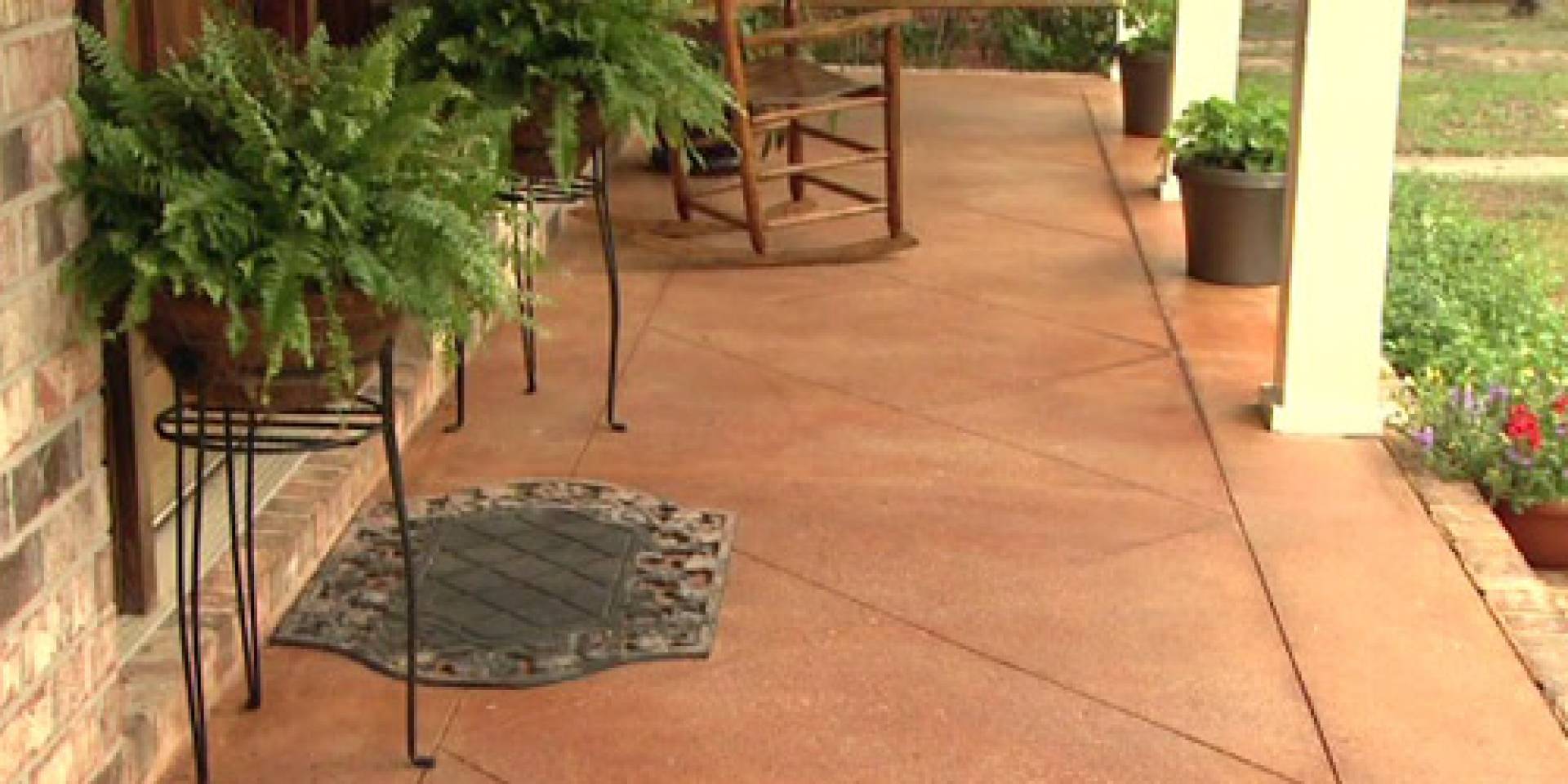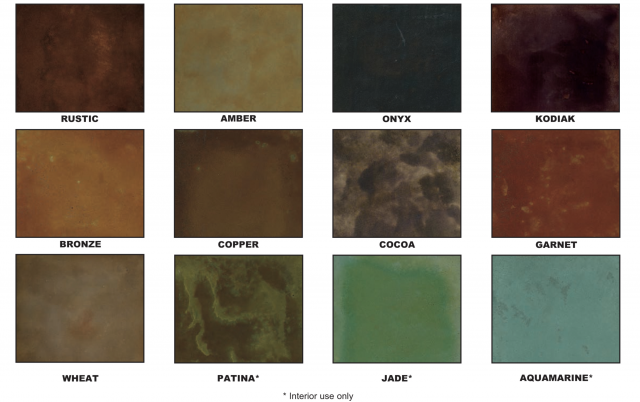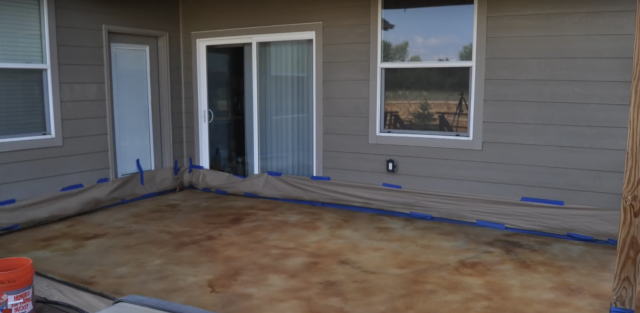Weekend Project: Acid Stain Your Patio!

Acid staining can transform your porch or patio from gloomy gray to an elegant marbled slab hued in a variety of colors. It’s a great affordable project, and easy to accomplish in a weekend.
Acid stains belong to a class of materials called reactive stains. They don’t use pigment to color concrete. Instead, they chemically react with the lime in the concrete to change its color. The chemical reaction creates rich, amazing and durable shades although you never know exactly what you’ll get because the color change relies on a chemical reaction. But check out this walkway snapped by Decorative Concrete Kingdom and see how beautiful unpredictability can be!
Hues You Can Choose
The concrete acid stains available through Amazon or your local home improvement store come in a variety of colors (14 or more!) with hues like Western Saddle, Garnet, Bronze and Garnet. One gallon will cover 100 to 200 sq. ft., depending on whether and how much you dilute it.

The tools you’ll need include a pressure washer, hose, scrub brushes, a concrete cleaning solution and a pump sprayer. Plus, the stain, of course, an acid neutralizer like baking soda and sealer.
Tips for Prepping
DIY Pete, one of the easiest video tutorials we found online, recommends protective gloves and eye-ware for you, and paper sheeting for your siding and trim that you’ll adhere with painter’s tape.
Spend time with a razor blade, wire brush and extra cleaner if you have paint spills, wood stains or grease spots because the acid won’t stain or penetrate those. 
To Dilute or Not
So you don’t get a color darker than suits your fancy, start with a two-to-one, water-to-acid stain solution, and be prepared to apply a second coat if it’s not dark enough the first go-round. All the pros recommend spraying in figure eights or random zig-zag patterns to achieve a decorative marbled look.
Acid staining your concrete is definitely an art – and if you dare, you can even apply a second/different color of stain for highlights adding more visual interest.
What About the Grass?
To avoid harming your lawn or shrubbery, you could cover any grass along the perimeter with a tarp or plastic. The spray comes out as a light mist so if it’s not windy, you should be fine. After the acid has reacted and dried you’ll neutralize it with water and a mop using baking soda or ammonia.
Once the solution is neutralized and swished around you don’t need to worry about it harming plants or grass. For less runoff, you can always use the mop as a sponge after neutralizing and squeeze the dirty water/deactivated mixture into a bucket.
Score, Stencil, Stain
Scoring lines in your patio can give it a more finished look or the appearance of tile, but the pros at Today’s Homeowner advise you’ll need a circular saw with a diamond-tipped masonry blade and an idea of how you want to lay out the pattern. Drawing chalk lines and cutting the concrete turns the project into a longer-than-weekend proposition, but the results are impressive.
Whether you do it yourself, or hire a pro, check out these eye-popping Pinterest pins for creative inspiration on scoring and stenciling. Don’t miss the interior floors, which would look great on an unfinished basement floor. The DIY Network has some additional tips for acid staining concrete indoors, so check those out before you take your sprayer inside!
Patio Living in Crystal Valley
Patios in the master-planned community of Crystal Valley make great indoor-outdoor living spaces. Tour the amazing new models from Richmond American Homes, available in ranch or two-story models and priced from the $300s.


